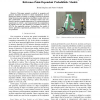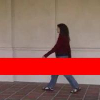81 search results - page 1 / 17 » Learning, Generation and Recognition of Motions by Reference... |
AR
2011
12 years 11 months ago
2011
This paper presents a novel method for learning object manipulation such as rotating an object or placing one object on another. In this method, motions are learned using referenc...
IROS
2008
IEEE
13 years 11 months ago
2008
IEEE
— This paper presents a method to recognize and generate sequential motions for object manipulation such as placing one object on another or rotating it. Motions are learned usin...
CVPR
2007
IEEE
14 years 6 months ago
2007
IEEE
Current approaches to motion category recognition typically focus on either full spatiotemporal volume analysis (holistic approach) or analysis of the content of spatiotemporal in...
ECCV
2004
Springer
14 years 6 months ago
2004
Springer
Abstract. The exploitation of video data requires to extract information at a rather semantic level, and then, methods able to infer "concepts" from low-level video featu...
CVPR
2005
IEEE
14 years 6 months ago
2005
IEEE
Probabilistic models have been previously shown to be efficient and effective for modeling and recognition of human motion. In particular we focus on methods which represent the h...


